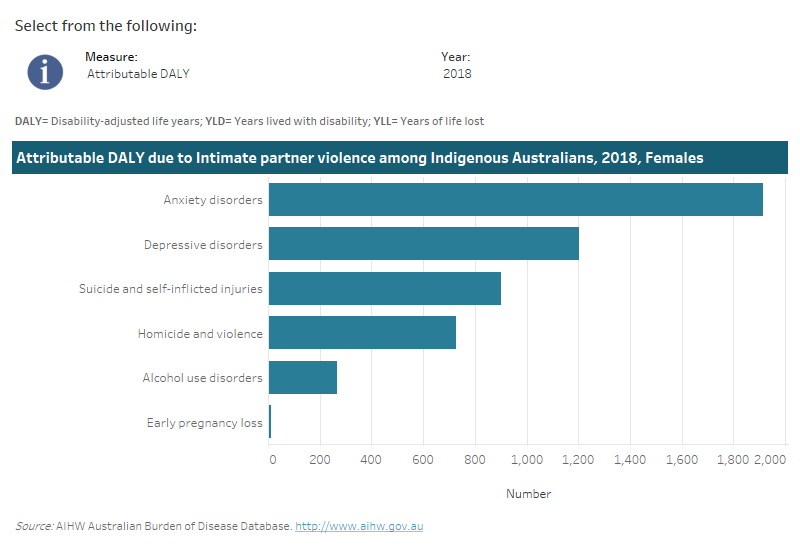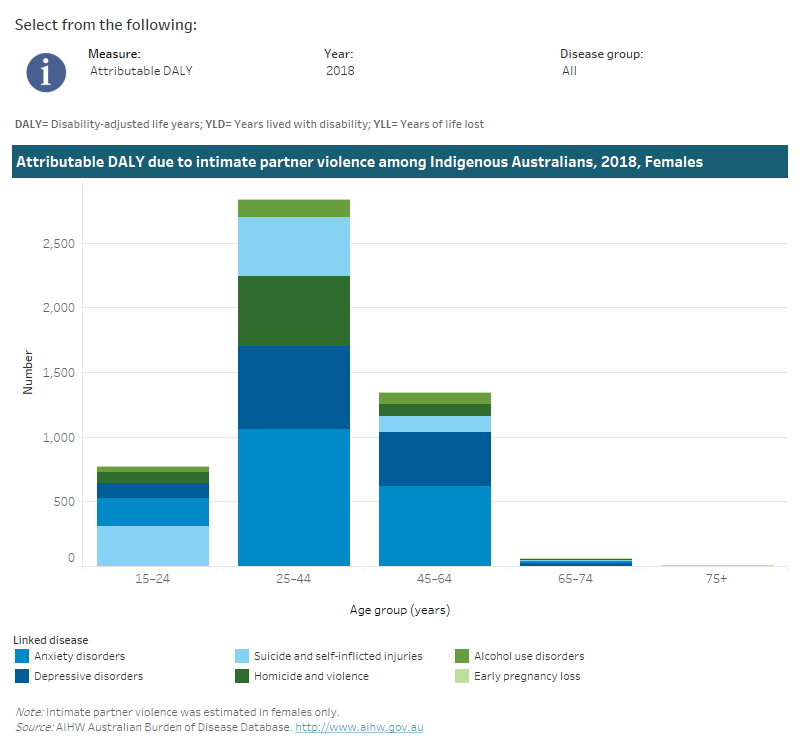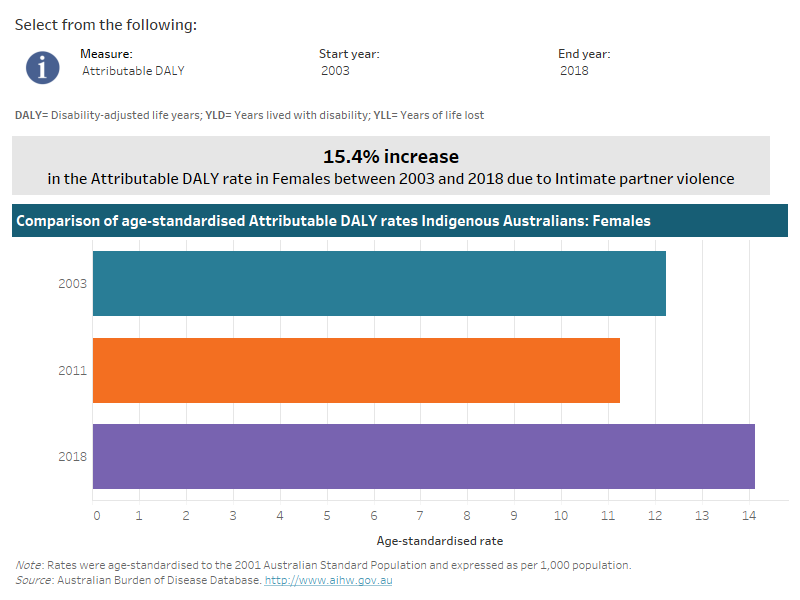Intimate partner violence
In 2018, intimate partner violence contributed to 2.1% of the total disease burden among Indigenous Australian women.
These estimates reflect the amount of disease burden that could have been avoided if all Indigenous women aged 15 and over in Australia were not exposed to intimate partner violence, which for this study included emotional, physical and sexual intimate partner violence by a cohabiting current or previous intimate partner.
Intimate partner violence was causally linked to homicide & violence, suicide & self-inflicted injuries, alcohol use disorders, depression, anxiety and early pregnancy loss (see ABDS 2018 Risk factor estimates for Indigenous Australians data table S1). The impact of this risk factor was estimated only in women as sufficient evidence in the literature to identify the causally linked diseases and the amount of increased risk (relative risk) is not currently available for men (AIHW unpublished; Ayre et al. 2016; GBD 2019 Risk Factor Collaborators 2020).
How much burden was attributable to intimate partner violence?
In 2018 among Indigenous women, intimate partner violence contributed 62% of homicide & violence total burden, 32% of suicide & self-inflicted injuries burden, 28% of early pregnancy loss burden, 26% of anxiety disorders burden, 20% of depressive disorders burden and 10% of alcohol use burden in Indigenous females.
This interactive data visualisation shows the burden attributable to intimate partner violence among Indigenous Australian women by linked disease. The main section shows a horizontal bar graph which can be customised to report data according to year and measure of attributable burden. Each bar represents the attributable burden of the disease linked to intimate partner violence.

How did burden attributable to intimate partner violence vary by age?
In 2018, burden from intimate partner violence was estimated in Indigenous women aged 15 and over.
Total burden due to intimate partner violence was highest for Indigenous women between ages 25–34 years. The most burden due to intimate partner violence in this age group was from anxiety disorders, suicide & self-inflicted injuries and anxiety disorders.
This interactive data visualisation shows the amount of burden attributable to intimate partner violence among Indigenous Australian women by age group and linked disease. The main section shows a stacked bar graph which can be customised to report data according to year, disease group and measure of attributable burden. Each bar represents the attributable burden within a particular age group. Each bar is also split into separate components with each colour representing a disease linked to intimate partner violence.

This interactive data visualisation shows the rate of burden attributable to intimate partner violence among Indigenous women by year. The main section shows a horizontal bar graph which can be customised to report data according to year and measure of attributable burden. Each bar represents the attributable burden within a particular year due to intimate partner violence.

References
AIHW unpublished. Health outcomes of violence: A review of data sources and evidence. Report to the Australian Government Department of Social Services.
Ayre J, Lum On M, Webster K & Moon L 2016. Examination of the burden of disease of intimate partner violence against women: Final report, 2011. Sydney: Australian National Research Organisation for Women’s Safety.
GBD 2019 Risk Factors Collaborators 2020. Global burden of 87 risk factors in 204 countries and territories, 1990–2019: a systematic analysis for the Global Burden of Disease Study 2019. The Lancet 396:1223–49.


